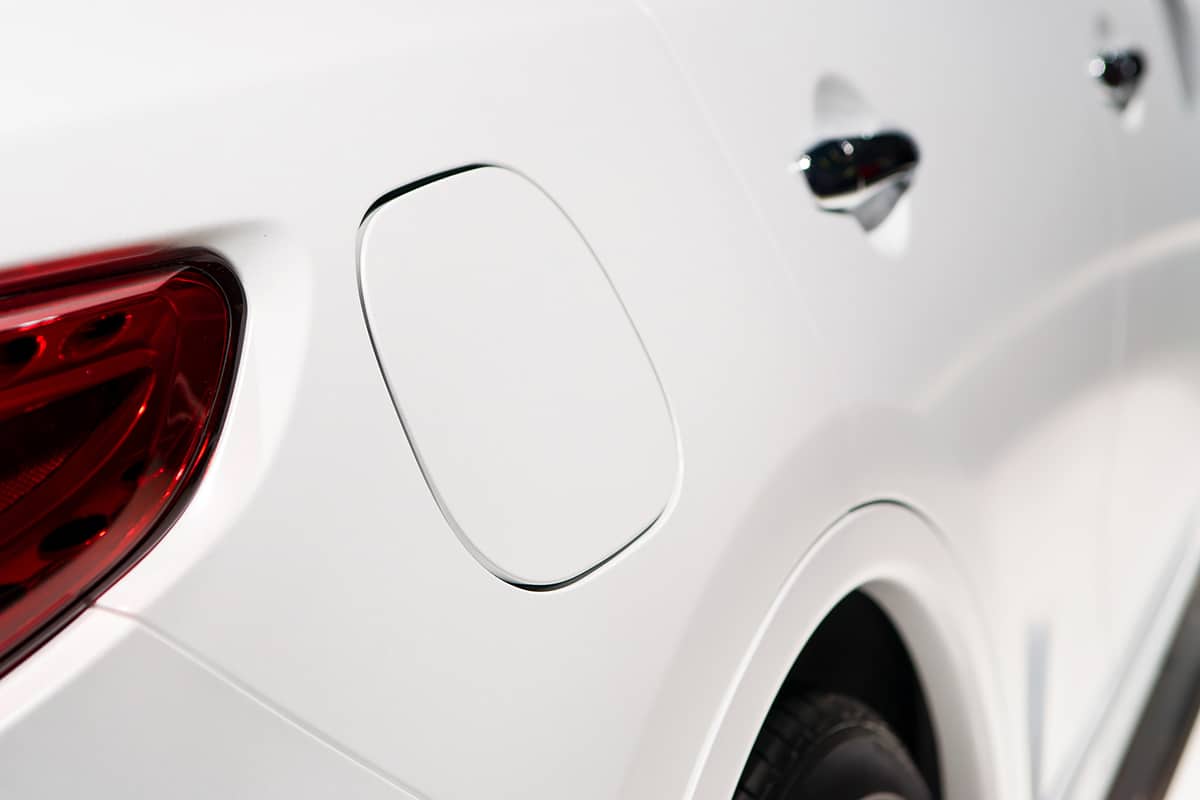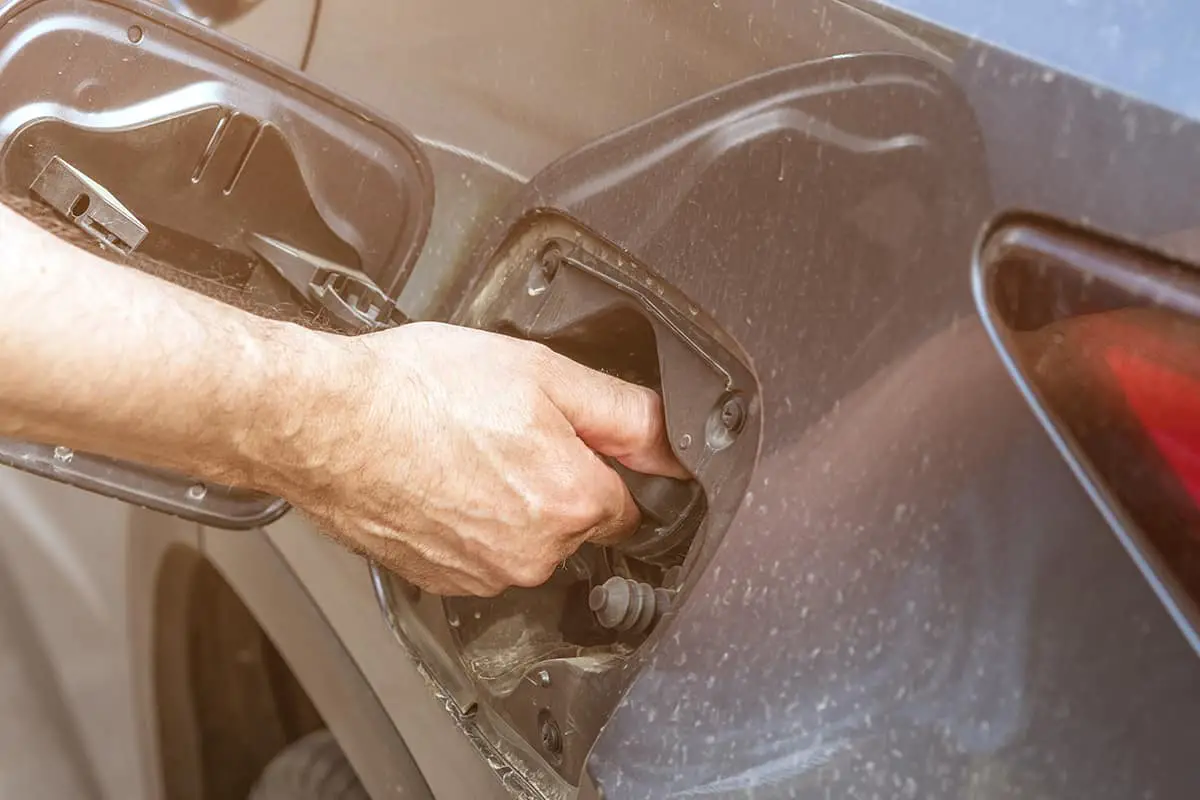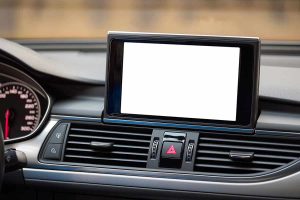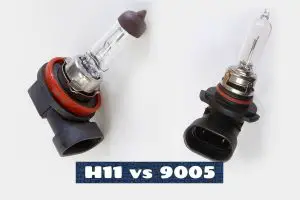It’s a cold winter morning, and you’re ready to hit the road. You jump into your car and try to open the gas tank door, but it’s frozen shut! You give it a few tugs, but it won’t budge. Panic sets in as you realize you have no idea how to fix this problem.
Luckily, there are four simple techniques you can try to unfreeze your gas tank door:
- The Hairdryer Method
- The De-Icer Method
- The Warm Water Method
- The WD-40 Method
Today, I’ll explain what these methods are in greater detail, as well as elaborate on what you shouldn’t do when you find yourself in such a situation and how to prevent this from happening in the future.
Why Gas Tank Doors Freeze

Car gas tank doors can become frozen for a variety of reasons, with the primary causes being cold temperatures and moisture. Moisture can originate from different sources, including precipitation like rain, snow, or sleet, or from humidity in the air.
When temperatures fall below freezing, any moisture around the gas tank door can freeze and create ice. The formation of ice on the gas tank door or the locking mechanism can result in the door becoming stuck or frozen shut.
How To Unfreeze A Gas Tank Door
Here are four different techniques you can try to unfreeze a frozen gas tank door.
1. The Hairdryer Method
The Hairdryer Method is a commonly used technique for unfreezing a gas tank door that is stuck due to ice formation. This method involves using a hairdryer to gently warm up the frozen area and melt the ice, allowing the door to be opened. If you want to use this method, follow these steps:
- Make sure your hairdryer has a long enough cord to reach the gas tank door. If necessary, use an extension cord.
- Plug in the hairdryer and turn it on to its lowest heat setting. High heat settings can cause damage to the paint or plastic around the gas tank door.
- Hold the hairdryer a few inches away from the gas tank door and aim it at the frozen area. Move the hairdryer back and forth to distribute the heat evenly and avoid overheating one spot.
- Continue warming the frozen area until the ice has melted sufficiently to allow the door to be opened. Be patient, as this may take several minutes depending on the severity of the ice buildup.
Once the ice has melted, try opening the gas tank door. If it still won’t budge, repeat the process or try using a different method.
2. The De-Icer Method
This is a more conventional method to unfreeze a gas tank door and involves using a de-icer spray (Amazon). The instructions on the label will tell you how to use it, but the process generally involves the following steps:
- Ensure that the area around the gas tank door is free of debris or snow.
- Spray the de-icer directly onto the frozen gas tank door, paying attention to the edges and locking mechanism.
- Wait for a few minutes to allow the de-icer to break down the ice.
- Try to gently open the gas tank door, avoiding the use of excessive force, which can damage the door or locking mechanism.
- Once the door is open, wipe away any remaining moisture or de-icer residue to prevent refreezing and potential damage.
3. The Warm Water Method
As its name suggests, you’ll need some warm water to pull off this trick.
- Prepare a container of warm water; ensure it is not too hot, as extreme temperatures could damage the paint or other components.
- Carefully pour the warm water over the frozen gas tank door, focusing on the edges and locking mechanism.
- The ice should begin to melt quickly, allowing you to gently attempt opening the gas tank door. Avoid using excessive force, which could damage the door or locking mechanism.
- Once the door is open, promptly dry the area with a clean cloth or towel to remove any remaining moisture and prevent refreezing.
- If necessary, repeat the process until the door is completely unfrozen.
Be aware that in extremely cold conditions, the water could refreeze quickly, potentially exacerbating the problem.
4. The WD-40 Method
WD-40, a widely-used lubricant and water-displacing spray, can help dissolve the ice and prevent it from sticking again. To perform this method, follow these steps:
- Shake the WD-40 can well and attach the provided straw to the nozzle for precise application.
- Spray WD-40 on the frozen gas tank door, focusing on the edges, hinges, and locking mechanism.
- Allow the WD-40 to penetrate the ice and work its way into the frozen parts for a few minutes.
- Gently attempt to open the gas tank door. Avoid using excessive force, which could damage the door or locking mechanism.
- Once the door is open, wipe away any excess WD-40 and moisture to prevent refreezing and potential damage.
When using WD-40, follow the manufacturer’s instructions and exercise caution to avoid contact with your skin or eyes. Keep in mind that WD-40 is not specifically designed for de-icing, but it can be effective in some cases.
What Not To Do When Trying To Unfreeze A Gas Tank Door

Now that we know what to do, allow me to explain the various things that may have popped into your mind that will not help unstick a frozen gas tank door.
1. Using force
Forcing a frozen gas tank door open can cause damage to the door, hinges, or locking mechanism. Excessive force might bend or break components, resulting in costly repairs.
2. Using hot water
Pouring hot water on a frozen gas tank door can cause thermal shock, potentially damaging the paint or cracking the plastic components. Additionally, the water could refreeze rapidly in cold temperatures, making the problem worse.
3. Using a lighter or matches
Using an open flame near a gas tank door is extremely dangerous due to the risk of igniting fuel vapors or causing an explosion. It can also damage the paint or surrounding components.
Preventing Gas Tank Door From Freezing
Now that you’ve unstuck your gas tank door, here are a few things you can do to prevent this from happening again.
1. Regular cleaning
Regularly cleaning your gas tank door helps remove dirt, debris, and moisture that can contribute to freezing. By keeping the area around the door clean, you reduce the chances of moisture getting trapped and turning into ice when temperatures drop. Additionally, cleaning allows you to inspect the door’s condition, including the rubber seal and locking mechanism, addressing any wear or damage that could lead to freezing problems.
2. Waxing
Applying a high-quality car wax around the gas tank door creates a protective barrier that can help repel water and prevent ice from forming. Waxing makes it harder for moisture to adhere to the surface, reducing the likelihood of freezing.
Regular wax application not only helps prevent the gas tank door from freezing but also protects the car’s paint from the harsh effects of winter weather and road salt.
3. Covering the gas tank door
Using a cover, such as a magnetic or adhesive cover designed for gas tank doors, can help prevent freezing by shielding the door from moisture, snow, and ice. By creating a physical barrier, the cover keeps the gas tank door dry and reduces the chances of ice formation.
When choosing a cover, ensure it is designed for your specific vehicle model and made of materials that won’t damage your car’s paint. Remember to remove the cover before attempting to access the gas tank door to refuel.






